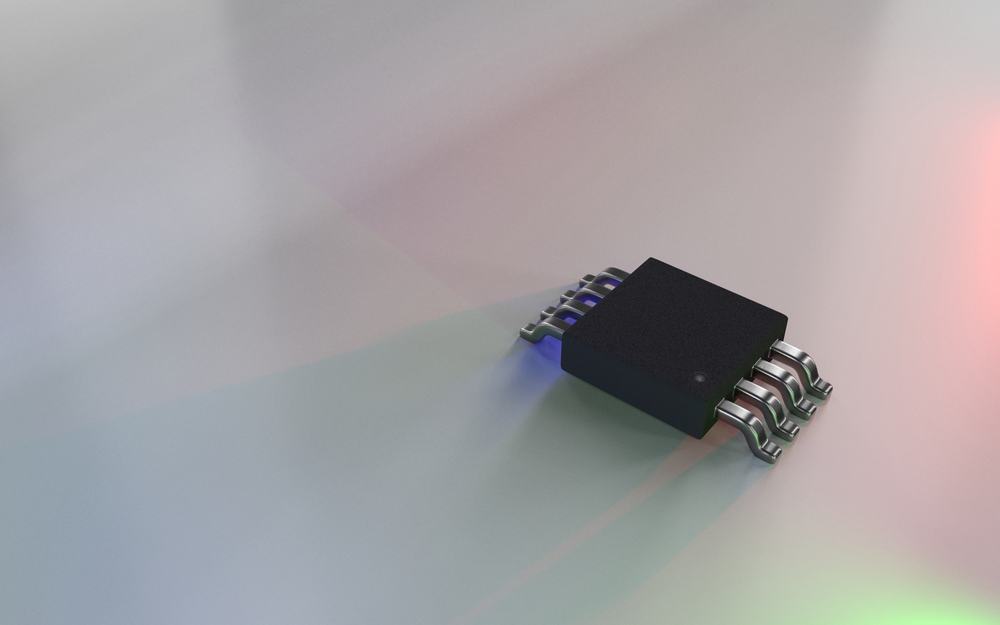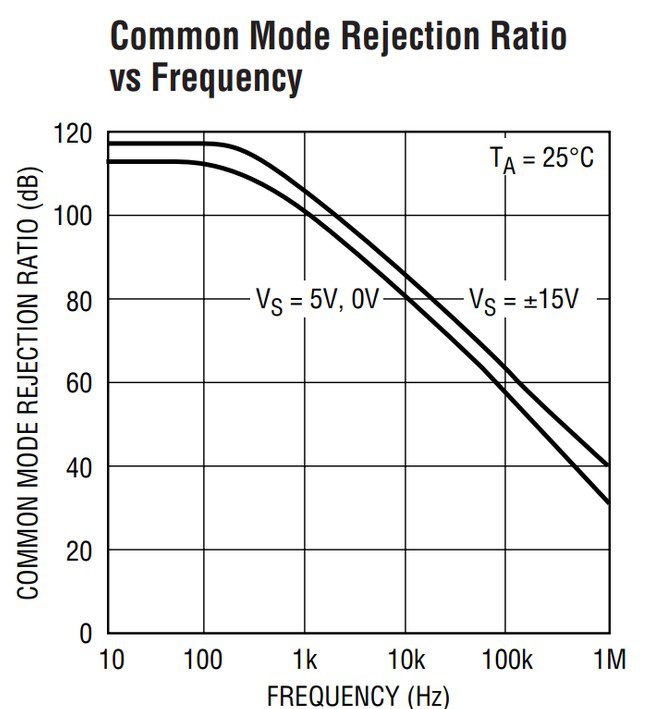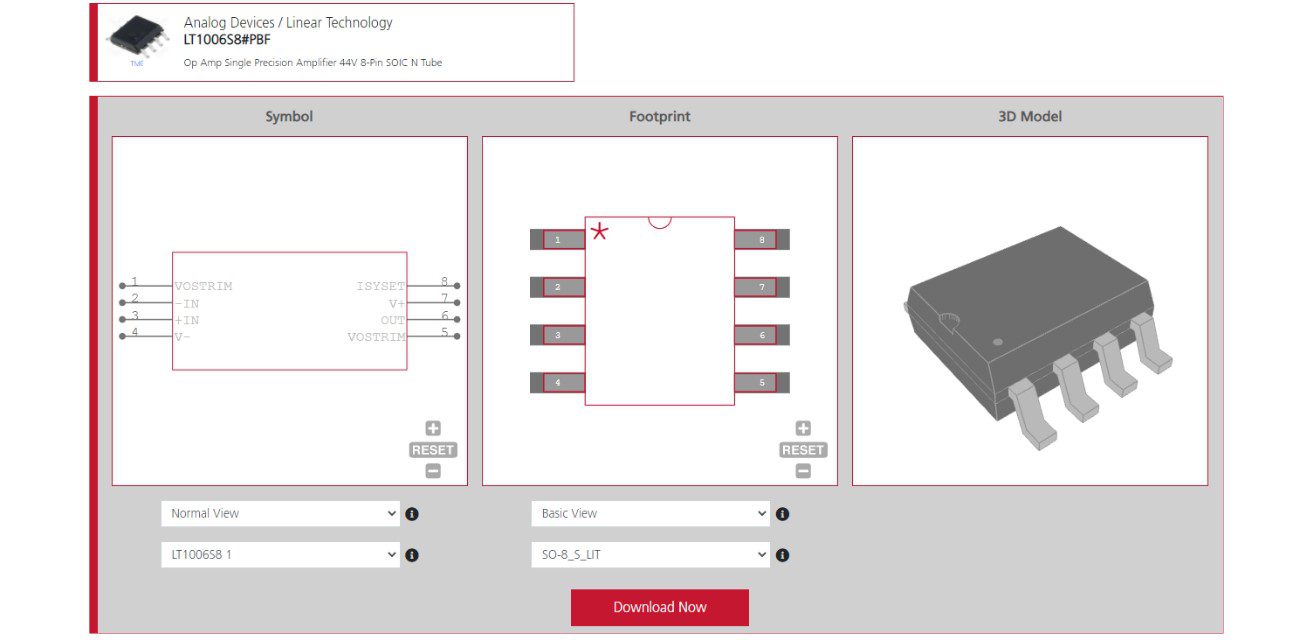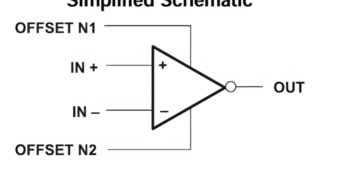
Even though the semiconductor industry continues to produce many new highly integrated, highly specialized SoCs with a small footprint, discrete devices like op-amps aren’t going away any time soon.
Op-amps are highly flexible devices for manipulating analog signals, and they are the building blocks for many advanced devices performing functions like mixing, filtering, amplification, and pulse shaping functions. Op-amps will be needed whenever a highly integrated chip for an analog system is unavailable to perform some of the essential functions listed above.
Of the many op-amps available on the market, one of the earliest precision op-amps ever released to market is the LT1006. This single op-amp has remained in production and is a popular option when precision measurements and amplification are required in analog circuits. If you need the LT1006 datasheet, keep reading to see where you can find reliable technical data, CAD data, and some comparisons for this component.
LT1006 Datasheet and Specifications
There are many different op-amps available with a wide range of specifications. Op-amps are general purpose devices for use in analog circuits, and the characteristics of the signal will partially determine the specifications that will drive component selection.
The LT1006 is one op-amp component useful in situations where extremely high noise suppression is required. Some applications include low-level signal acquisition and amplification, which would need to be performed when interfacing with analog sensors.
Specifications
Some of the main specifications found in the LT1006 datasheet include:
- Maximum gain: up to 4,000,000
- Input impedance: 400 MOhm (differential) or 5 GOhmn (common-mode)
- Gain-bandwidth product: 550-650 kHz
- Common-mode rejection ratio (CMRR): up to ~120 dB
- Power supply rejection ratio (PSRR): up to ~120 dB
- Supply voltage: Up to 22 V
- Differential input voltage limit: 30 V
These specifications are quite different from what you would find for other general-purpose op-amps, such as the LM358 from Texas Instruments. While LM358, LT1006, and many other general-purpose op-amps will have similar supply and input limits, the gain-bandwidth product and the noise rejection characteristics illustrate the usefulness of the LT1006.
The LT1006 gain-bandwidth product is much lower than what is found in other op-amps. Also, the LT1006’s noise rejection ratios (CMRR and PSRR) are very high compared to other op-amps, exceeding the specifications of the LM358 by nearly 40 dB.
These two specifications and the very high maximum gain make the LT1006 ideal for low-level, low-frequency signal acquisition and amplification. We can see more detail on the effectiveness of this component at very low frequencies by looking at the LT1006 datasheet.
The image below shows the CMRR curve from the LT1006 datasheet as a function of frequency. From this curve, we see that steep rolloff in the curve begins at about 100 Hz; above this frequency, the rolloff is approximately 20 dB/decade.

CMRR curve found in the LT1006 datasheet.
The CMRR value of the LT1006 could be increased above the 100 Hz cutoff with a higher-order active filter, possibly constructed from a more advanced unity gain op-amp. PCB layout strategies that isolate and shield low-level signals will also help prevent noise from coupling to the feedline entering the LT1006 input pins.
Note that these values shown above and other specifications in the LT1006 datasheet will depend on the supply voltage, temperature, and other factors. This will affect how the overall system needs to be engineered if the LT1006 is used in an ideal application with low-level signal acquisition, providing stable high-gain amplification. The packaging is also an essential consideration as the LT1006 comes in multiple variants with different specifications.
Packaging
The LT1006 is available in multiple packages, corresponding to a different part number. These alternate part numbers have slightly different specifications, so make sure to check the LT1006 datasheet before swapping one variant for another.
The standard LT1006 op-amp package is the SOIC-8, an SMD package with a moderately small lead size and low profile. These components are available in lead-free variants, such as the LT1006S8 shown in the image below. The LT1006C/AC/S variants all come in their packages, and their specifications vary slightly, as discussed above.

Example symbol, footprint, and 3D model of the package for LT1006S8#PBF from Analog Devices.
When you need to find footprints, application notes, and the LT1006 datasheet, you can quickly find the components you need with the parts search features in Ultra Librarian. The Ultra Librarian platform gives you access to PCB footprints, technical data, and ECAD/MCAD models alongside sourcing information to help you stay ahead of supply chain volatility. All ECAD data you’ll find on Ultra Librarian is compatible with popular ECAD applications and is verified by component manufacturers to help streamline your designing process.
Working with Ultra Librarian sets up your team for success to ensure streamlined and error-free design, production, and sourcing. Register today for free.








